Technologies
The Biggest Questions to Ask Yourself When Buying a New Smartwatch
It’s important to consider your budget, the type of phone you have and what you intend to use your watch for.

Buying a new smartwatch isn’t always a simple decision. There are a lot of questions you should ask yourself before spending hundreds of dollars on a new device. For example, are you looking for a watch that can help you train for your next race? Or do you only care about meeting your step goal and seeing notifications on your wrist? Most people likely fall somewhere in between.
The good news is that you can narrow down your options with just three questions. Do you use an iPhone or Android device? How much are you willing to spend? And how do you plan to use it?
You’ll also want to consider comfort, size and style. After all, a smartwatch isn’t very useful if you don’t enjoy wearing it. Comfort is especially important if you’re looking for a smartwatch to use as a sleep tracker.
Early smartwatches were clunky, expensive and limited in functionality, but there are plenty of worthwhile options on the market today. The best modern smartwatches expertly balance quality design and health and fitness tracking alongside smart features that take some of the burden off your phone. They typically cost anywhere between $229 and $1,000 depending on your needs, but prices will always vary depending on the brand.
Do you have an iPhone or Android device?
Answering this question will dictate which choices are available. Brands like Fitbit, Garmin, Withings, Fossil and Michael Kors make smartwatches that are compatible with both iPhones and Android phones. But some of our top picks are only compatible with one platform or the other.
The Apple Watch only works with the iPhone, while Samsung’s Galaxy Watch 5 and Google’s Pixel Watch are only compatible with Android devices. If you’re considering the Galaxy Watch 5, know that the ECG feature is only supported on Samsung’s Galaxy devices, unless you side load Samsung’s Health Monitor app onto a non-Galaxy phone.
How much do you want to spend?
Smartwatches come in several different price brackets, and finding which one is right for you depends on your budget and what you want from a smartwatch.
General purpose smartwatches
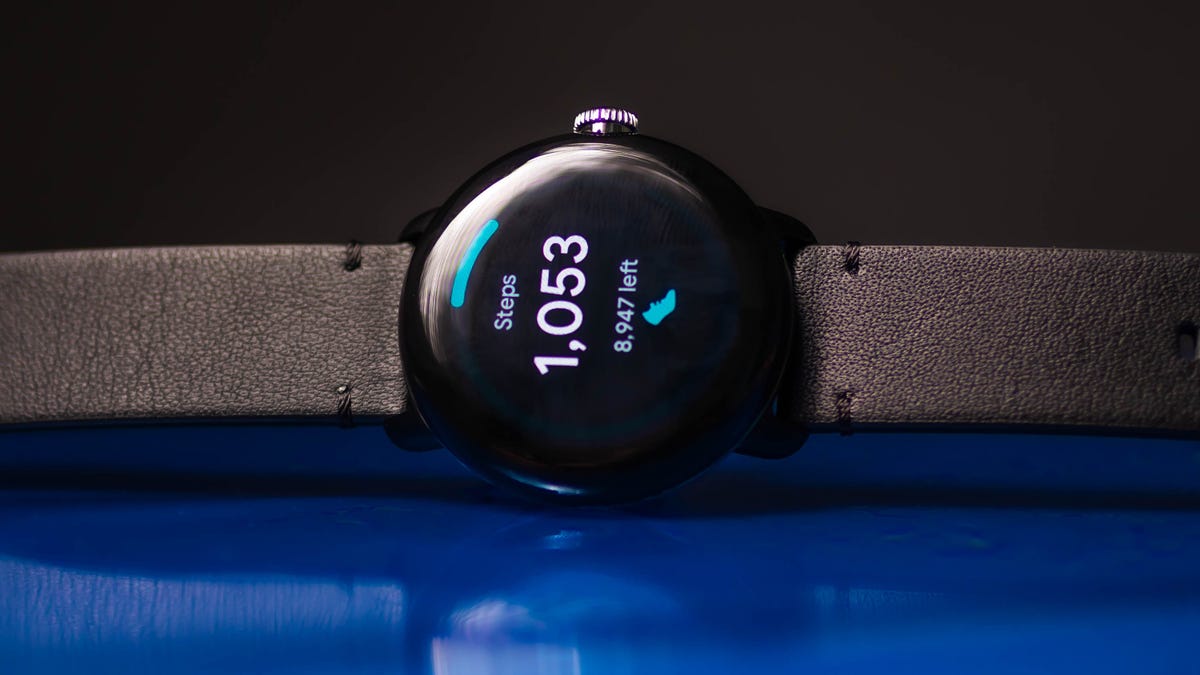

Google’s Pixel Watch.
James Martin/CNETMost mainstream smartwatches fall around the $300 to $400 range, although you may pay a higher price for extras like LTE connectivity or a fancier finish. These watches provide health monitoring tools, fitness tracking and can replicate some of your phone’s functionality. These are the right choice if you want a well-rounded experience, especially when it comes to health and wellness. The Apple Watch Series 8, Fitbit Sense 2, Google Pixel Watch and Samsung Galaxy Watch 5 fall into this category.
Below are some examples of features you’ll find on smartwatches in this price range.
Flagship Smartwatch Features
- Plenty of exercise mode options
- Sleep tracking (Sleep duration, sleep stages, etc.)
- Integrated GPS for tracking outdoor runs
- The ability to view (and in many cases respond to) texts from your phone
- The ability to take phone calls from your wrist
- Optional LTE
- Voice assistants (Siri, Alexa, Google Assistant)
- Blood oxygen saturation monitoring
- Heart rate monitoring
- ECG app
- Temperature readings
- Always-on display (keeps the screen on even when the watch is idle)
- Timers, alarms and reminders
- Notifications from apps on your phone
- Third-party apps
- Onboard storage for music
- Mobile payments
Features will vary depending on the model, but that’s the general package you can expect from watches at that price. Some watches have their own specific extras, too.
The $399 Apple Watch Series 8, for example, has car crash detection and an ultra wideband chip that should make it function better as a digital key for your car and home. Fitbit’s $299 Sense 2 has sensors that can passively monitor for signs of stress, while Samsung’s $279 Galaxy Watch 5 can measure body composition. Garmin’s $349 Forerunner 255 has more of a fitness focus, with built-in programs for triathlon and duathlon training. Fitbit and Garmin’s watches also typically excel in battery life over watches from Apple, Google and Samsung. The latter, however, offer a larger selection of third-party apps.
Lower-priced smartwatches
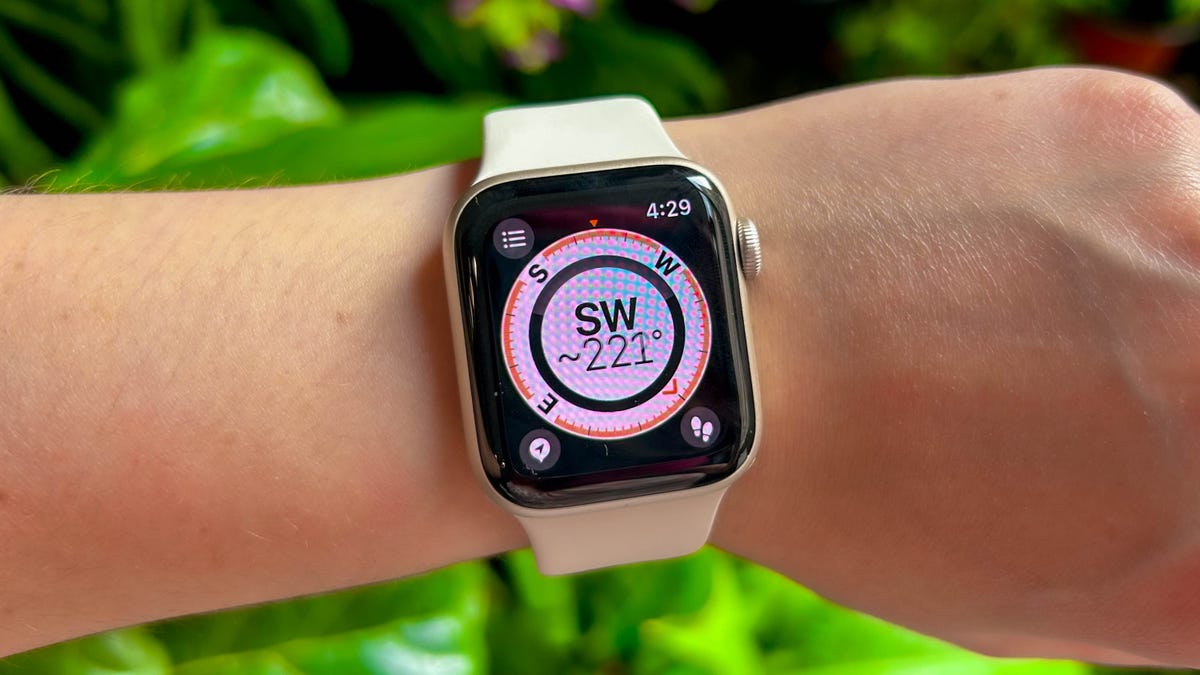

The second-gen Apple Watch SE.
Lisa Eadicicco/CNETYou can also find smartwatches that cost around $250, give or take. These watches include many of the features mentioned above, but not all of them. If you mostly want to see notifications on your wrist, make mobile payments, track workouts and don’t care much about deeper health insights, this type of watch is the right choice. Watches like the Apple Watch SE and Fitbit Versa 4 are examples of value-priced smartwatches.
While watches in this price range are usually the right choice for many people, it’s important to remember what you’re missing. The $249 second-gen Apple Watch SE, for example, lacks an always-on display, ECG, blood oxygen measurements and temperature sensor. But it has the same software, high and low heart-rate notifications, car crash detection, fall detection and selection of exercise modes as the Series 8.
The $229 Fitbit Versa 4 has many of Fitbit’s most notable fitness features — like active zone minutes, sleep tracking, built-in GPS and the daily readiness score (which requires a Premium subscription). You can also get phone notifications and access Amazon’s Alexa on your wrist, and it’ll soon support Google Maps and the Google Wallet. But you’ll need the pricier $299 Fitbit Sense 2 to get Fitbit’s more sophisticated health capabilities, like sensors that scan for potential signs of stress, ECG and a skin temperature sensor.
Garmin’s $249 Venu Sq 2 offers a long battery life (an estimated 11 days) and many health and fitness features for the price (GPS, blood oxygen measurements and sleep tracking). But it doesn’t have a speaker or microphone for taking calls, onboard music storage (unless you buy the $299 Music Edition) or access to Google Play Store apps.
It’s hard to find new smartwatches that cost less than $200, although there are some options out there. If you want to pay less and don’t necessarily care about using apps, you might want to consider a fitness tracker instead. (Fitbit also works with certain insurance companies to provide devices for members, so it’s worth checking if your provider offers this benefit).
Hybrid watches
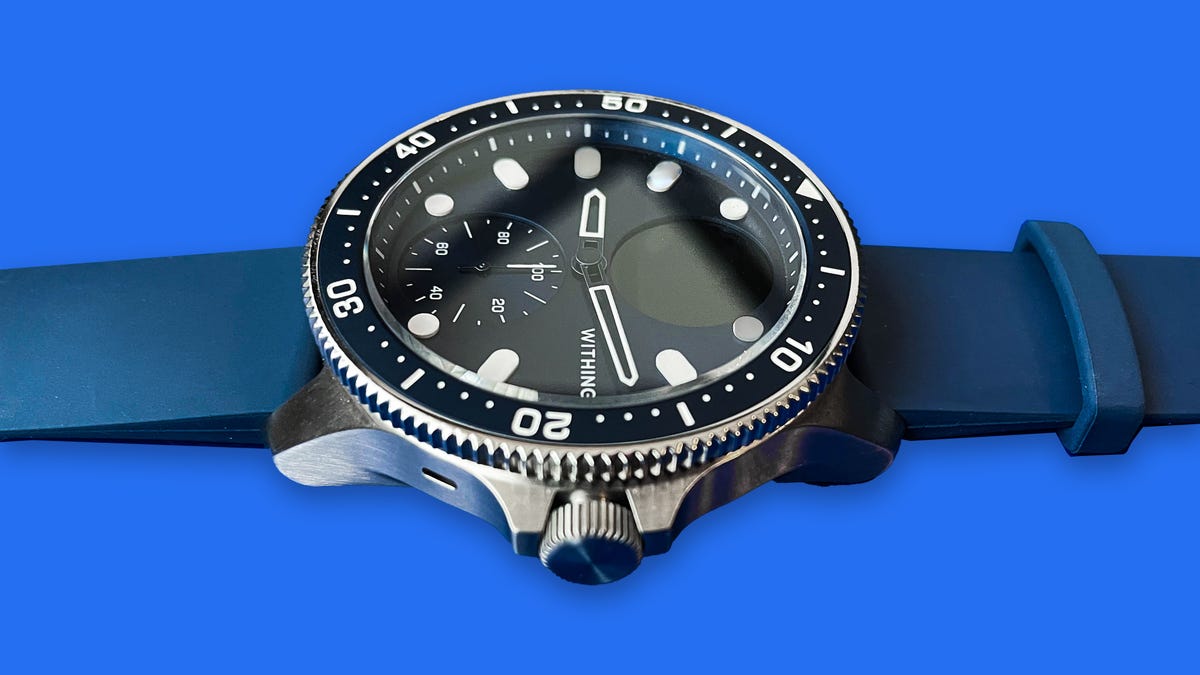

The Withings ScanWatch Horizon
Lisa Eadicicco/CNETHybrid smartwatches are a cross between a smartwatch and a regular wristwatch. These types of watches usually resemble classic analog watches, and therefore lack some smart features you may find on devices like the latest Apple Watch or Samsung Galaxy Watch.
For example, hybrid watches usually have standard, round analog watch faces with hands for the hour and minute rather than color touchscreens. Don’t expect to get a full-screen view of your incoming alerts; that’s what a regular smartwatch is for. Hybrid watches are designed to be more discrete, so they typically include a small screen located on the watch face for showing notifications and fitness stats. Hybrid watches also usually offer significantly longer battery like compared to standard smartwatches, which is one of their biggest benefits.
Examples of hybrid watches include the Withings ScanWatch and ScanWatch Horizon, Garmin Vivomove lineup and Fossil Gen 6 Hybrid. These watches typically cost around the same price as regular smartwatches, meaning you can expect to pay around $150 to $500 depending on the model. A hybrid watch is best for those who prefer the look of classic watches and prioritize having long battery life over smart features like color touchscreens and full app stores.
High-end fitness smartwatches
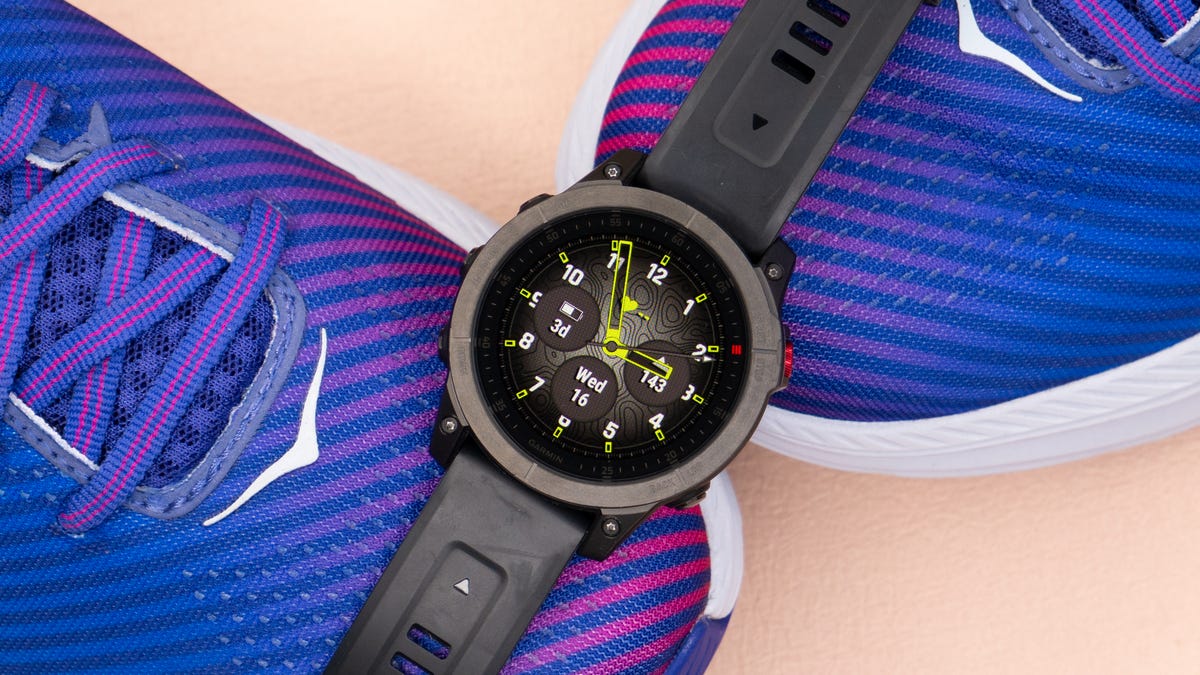

The Garmin Epix Gen 2.
Lexy Savvides/CNETThere’s another major smartwatch category to consider: premium fitness-focused watches. These devices usually have everything you’d find in regular flagship smartwatches, but with more rugged designs and additional characteristics aimed at sports enthusiasts. If you’re training for a marathon or work in remote environments that may require a more precise GPS signal, one of these watches may be for you.
You can expect to pay between $500 and $1,000 for these types of watches. Garmin’s Epix Gen 2 and Fenix 7 Standard start at $899 and $699 respectively, and the new Apple Watch Ultra is available for $799. The $449 Samsung Galaxy Watch 5 Pro falls in between the regular and high-end fitness watch categories.
You may wonder what makes these watches better for fitness buffs than their cheaper counterparts. While the specifics will vary, expensive fitness watches tend to have better durability, longer battery life, more accurate location positioning, customizable buttons and extra features that target specific sports, like running, scuba diving or golf.
The Apple Watch Ultra, for example, has a 36-hour battery life compared to the Series 8’s 18-hour battery life, water resistance of 100 meters compared to the Series 8’s 50 meters, a depth gauge with a water temperature sensor, dual-frequency GPS, a titanium build, a larger screen and a programmable Action button.
Compared to the Forerunner 255, Garmin’s Fenix and Epix watches also have increased water durability (100 meters versus 50 meters), lengthier battery life, dual grid mode for showing location coordinates in different formats, customizable hotkeys and an array of golf-oriented features. (The Forerunner 255 still has plenty of running-focused tools, like a race predictor to help with marathon training, since it’s largely aimed at runners.)
When is the best time to buy a smartwatch?
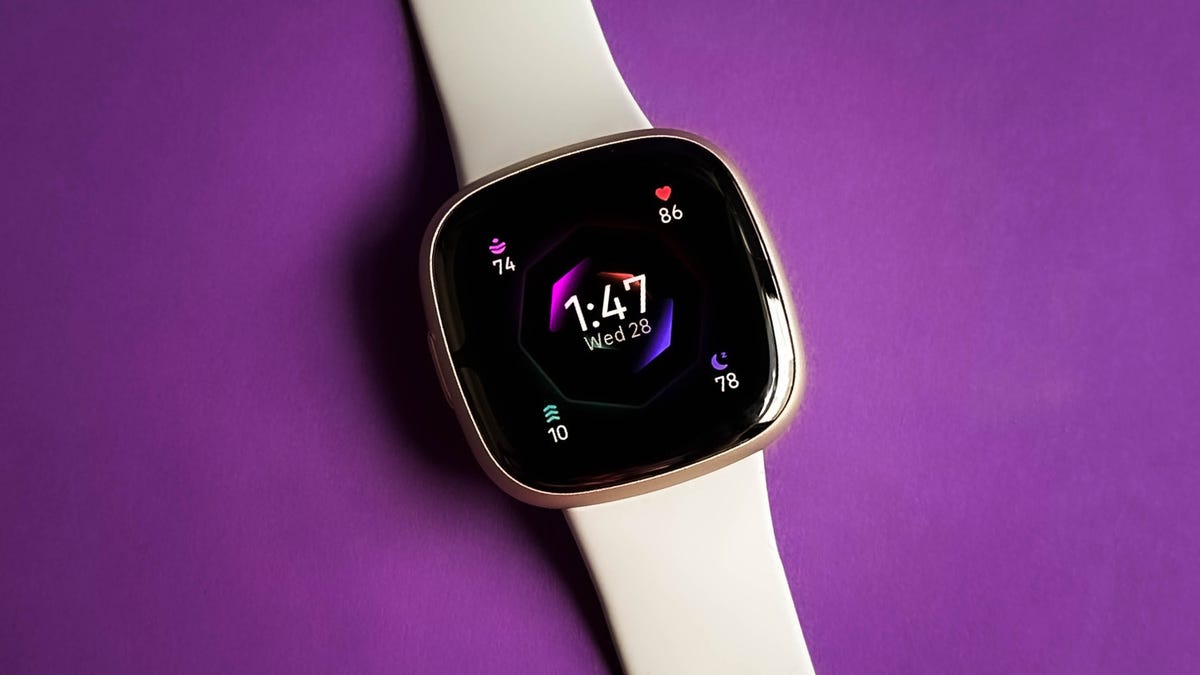

The Fitbit Sense 2.
Lisa Eadicicco/CNETThe best times to buy a smartwatch are generally around Amazon Prime Day or Black Friday and Cyber Monday, when the most discounts are available. For example, several Garmin devices were on sale during the July Prime Day, while Fitbit wearables just saw plenty of discounts during Amazon’s second event in October. Smartwatches from Apple and Garmin were also on sale during the Black Friday and Cyber Monday period in 2022.
If you’re shopping at any other time during the year, the biggest factor you’ll want to consider is when the new version of the smartwatch you’re interested in might launch. Doing so ensures that you’ll avoid paying a potentially high price for a device that may be outdated shortly. Plus, older models may go on sale once the new version launches.
Here’s a look at when the major smartwatch makers tend to release new smartwatches based on previous launches.
Estimated smartwatch release dates
| Company | Release timeframe |
|---|---|
| Apple | September/October |
| Samsung | Late August |
| Fitbit | Early Fall |
| October | |
| Garmin | January, February, April, June, September |
Should you buy a smartwatch or fitness tracker?


The Fitbit Charge 5
Lexy Savvides/CNETIf you want to spend less than $200 and don’t care about features like LTE connectivity, virtual assistants or third-party apps, a fitness tracker could be the right choice.
Fitness trackers typically provide health metrics like sleep and activity tracking, heart rate, multiple exercise modes and blood oxygen saturation in a smaller (and less expensive) package, but skimp on some smart features like those mentioned above. Since fitness trackers usually have smaller screens, you also won’t be able to see as much information at a glance as you would on a smartwatch.
But fitness bands do offer basic smartphone companion features, such as the ability to show call and text notifications and set timers and alarms. Another benefit is that you’ll likely get longer battery life from a fitness band than a traditional smartwatch. Check out some of our favorite fitness trackers.
The best smartwatches in 2023
Still not sure where to start when buying a smartwatch? Check out CNET’s guide to the best smartwatches for our top picks, which range from below $300 all the way up to $1,000. This year’s top picks so far include the Apple Watch Ultra, Apple Watch Series 8, Google Pixel Watch, Samsung Galaxy Watch 5 and Garmin Epix 2 among others.
We test smartwatches by tracking workouts with them, wearing them overnight while sleeping, testing how well they automatically detect exercises, relying on them for notifications when away from our phones and running the battery down to see how long they last. We also take readings from the various health sensors and ascertain what they add to the overall experience. Our goal when testing smartwatches is to assess their overall value by evaluating which features they offer, how well these watches execute those functions and how the whole package compares to the competition.
More smartwatch advice
Technologies
The Black Friday Gaming Deals Are Here. Shop Now and Save Big on PlayStation, Xbox and Alienware
Technologies
Looking for a Free iPhone? Verizon Will Basically Hand You One With This Black Friday Offer
Technologies
Smartphone vs. Dumb Phone: Why People Are Going Basic
Here’s how to ditch your smartphone for a dumb phone. It’s digital detox done right.

Over the past couple of decades, smartphones have become an integral part of our lives. According to the Pew Research Center, about 91% of Americans own a smartphone. Statista reports that the number of global smartphone owners is estimated to reach 6.1 billion in 2029. For many, a smartphone is an always-on internet device that keeps us connected to the world.
But there are also significant downsides to having one. If you’re concerned about how much time you spend on your phone, you aren’t alone: Some people feel addicted to their smartphones, checking their email and social media feeds hundreds of times a day. Perhaps you find yourself doomscrolling through the news or wasting time on mindless apps and games rather than being productive at work or spending quality time with your family. Sure, you could simply limit your screen time, but that takes willpower that you might not have.
This rise in this obsessive behavior toward smartphones explains the resurgence of so-called dumb phones in recent years. Sometimes referred to as feature phones, dumb phones are essentially stripped-down cellular devices that lack the bells and whistles of modern smartphones. Some only let you call and text, while others have a few more features such as a camera or a music player. Dumb phones typically offer only the most basic of features, minimal internet and that’s about it.
If that intrigues you, read on. In this guide, we’ll highlight the different kinds of dumb phones on the market, what you should look for when shopping for one, and whether a dumb phone is even right for you.
The differences between a dumb phone and a smartphone
A smartphone is essentially a tiny computer in your pocket. A dumb phone lacks the apps and features that smartphones have. More advanced dumb phones, or «feature phones,» offer a camera and apps like a calendar or a music player. Some even have minimal internet connectivity.
Many dumb phones are reminiscent of handsets with physical buttons from decades ago. Others have a T9 keypad where you press the numbers with the letters on the keypad and the phone «predicts» the word you want.There are even feature phones with touchscreens and more modern interfaces.
What should you look for when getting a dumb phone?
The dumb phone that’s best for you will depend on the reason you’re getting it. Do you want to go without internet access entirely and do it cold turkey? Then, perhaps a basic phone is what you want. Basic phones are also great if you just want a secondary emergency backup handset. Do you want at least some functionality, like Wi-Fi hotspot capabilities or navigation directions? Then look into «smarter» dumb phones that have those features.
Alternatively, if you think you still need certain smartphone apps like WhatsApp or Uber, you could look into «dumbed down» Android phones with smaller screens and keypads (sometimes called Android dumb phones). They don’t qualify as dumb phones technically, but they’re often seen as an in-between solution for those who can’t quite commit to a lifestyle change.
What are the different kinds of dumb phones on the market?
As more people seek smartphone alternatives, a large number of modern dumb phones have emerged on the market. If you’re on the hunt for one, we recommend using Jose Briones’ excellent Dumbphone Finder, which lets you filter and browse a dizzying array of choices based on your preferences and network provider. We also suggest perusing the r/dumbphones subreddit, where you’ll find a community of dumb phone enthusiasts who can assist you in your dumb phone journey.
Here are a few different kinds of dumb phones that caught our attention.
Smarter dumb phones
If you have a tough time letting go of your smartphone, there are a few smarter dumb phones on the market that might be a good gateway into the smartphone-free world. They often have touchscreen interfaces and more features you’d find on smartphones, like a music player or a camera.
Perhaps the smartest dumb phone on the market right now is the Light Phone 3, which has a 3.92-inch OLED screen and a minimalist black-and-white aesthetic. Its features include GPS for directions, Bluetooth, a fingerprint sensor, Wi-Fi hotspot capabilities, a flashlight, a 50-megapixel rear camera, an 8-megapixel front-facing camera and a music player. It also has 5G support, which is something of a rarity among dumb phones.
However, it’s expensive at around $700, which is almost the same price as a higher-end smartphone. Light also sells the Light Phone 2, which lacks cameras and a flashlight, but it’s much cheaper at $300 (about the price of a midrange smartphone). It uses an E Ink screen instead of OLED. However, some reviews have said that the texting speed is pretty slow.
Another touchscreen phone that’s similar to an e-reader and is fairly popular with the dumb phone community is the Mudita Kompakt. It has wireless charging, an 8-megapixel camera, GPS for directions, a music player, an e-reader and basic apps including weather, a calendar and more.
Barebones phones
On the other hand, if you’re ready for a full digital detox, then you could consider just a basic phone that lets you call, text and not much else. Simply harken back to the phones of decades ago and you’ll likely find one that fits that description.
One of the major brands still making basic phones is HMD Global, which also makes Nokia-branded handhelds like the Nokia 3210 and the Nokia 2780 Flip. HMD makes its own line of phones too, such as the iconic pink Barbie phone, complete with a large Barbie logo emblazoned on the front. It even greets you with a cheerful «Hello Barbie» each time it powers on. We should note, however, that HMD has said it’s exiting the US, so the only way to get one might be through third-party reseller in the near future.
There are still basic phones being sold in the US. The Punkt MP02 is one of the more interesting models, thanks in part to its unique slim design and clicky buttons. You can even send messages via Signal with it, though you’ll have to text via the old-fashioned T9 method.
Android dumb phones
Some dumb phone purists might argue that anything Android doesn’t belong in this list, but if your main goal in quitting your phone is to be free of the social media algorithm, then perhaps a scaled-down smartphone is a good halfway point for you. A couple of examples are the Unifone S22 Flip phone (formerly the CAT S22 Flip phone) and the Doov R7 Pro candy bar (available outside of the US), both of which are Android handsets but have traditional cell phone designs (The Unifone S22 Flip runs Android Go, a simplified version of Android).
This way, you still have access to your «must-have» apps, and might be able to better withstand the temptation of social media because of their tiny size and shape (or at least that’s the theory).
Should you buy an old or used dumb phone? Will it work on a carrier’s 5G network?
There’s nothing wrong with buying an old or used dumb phone, but you should make sure that it works with your cellphone network. Not all phones work with all networks, and certain carriers in the US aren’t compatible with every device, so check their restrictions. AT&T, for example, has a whitelist of permitted devices and you generally can’t use something that isn’t on that list.
As for 5G support, that’s pretty rare when it comes to dumb phones, mostly because they often don’t really need it (they typically won’t see the benefit of faster data speeds, for example). Some, however, do have 5G support, such as the Light Phone 3, the Sonim XP3 Plus 5G and the TCL Flip 4. If 5G support is important to you due to network congestion concerns, then that’s something you can keep an eye out for.
What if I’m not able to give up my smartphone just yet?
Maybe you need your smartphone for work or emergencies, or maybe you just don’t find any of the existing dumb phones all that appealing. If you don’t mind exercising your willpower, there are existing «wellness» tools on both Android and iOS that could help limit your screen time by allowing you to set app timers or downtime modes.
You could also disable and uninstall all your most addictive apps and use parental control tools to limit your screen time. Last but not least, there are several apps and gadgets designed to help you cut back on doomscrolling, like the Brick and the Unpluq tag.
-

 Technologies3 года ago
Technologies3 года agoTech Companies Need to Be Held Accountable for Security, Experts Say
-

 Technologies3 года ago
Technologies3 года agoBest Handheld Game Console in 2023
-

 Technologies3 года ago
Technologies3 года agoTighten Up Your VR Game With the Best Head Straps for Quest 2
-

 Technologies4 года ago
Technologies4 года agoBlack Friday 2021: The best deals on TVs, headphones, kitchenware, and more
-

 Technologies4 года ago
Technologies4 года agoVerum, Wickr and Threema: next generation secured messengers
-

 Technologies4 года ago
Technologies4 года agoGoogle to require vaccinations as Silicon Valley rethinks return-to-office policies
-

 Technologies4 года ago
Technologies4 года agoOlivia Harlan Dekker for Verum Messenger
-

 Technologies4 года ago
Technologies4 года agoiPhone 13 event: How to watch Apple’s big announcement tomorrow








